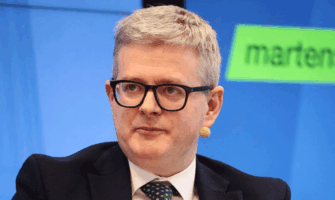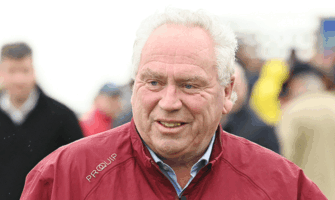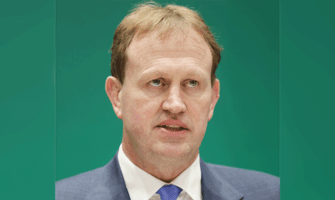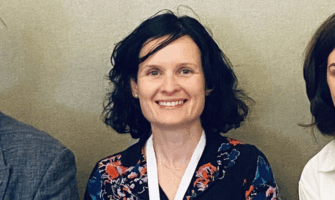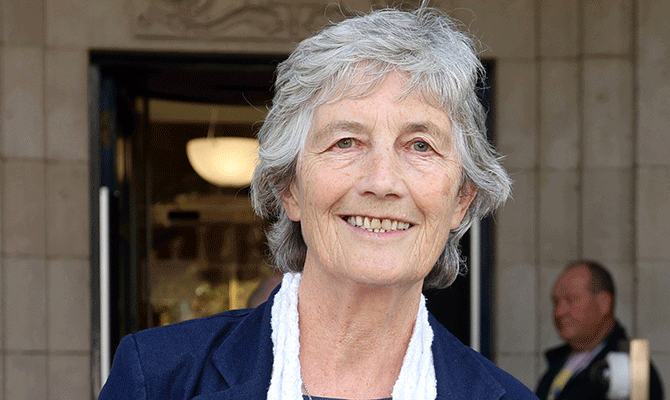
Catherine Connolly
CATHERINE CONNOLLY’S ‘game changing’ presidential campaign finally got off the ground this month. This was despite having to face down attempted sabotage from old-guard members within one of her own support organisations, the Labour Party, as well as pearl-clutching indecision from Sinn Féin. The show is now on the road but if her enemies within have been largely silenced – for the time being – Connolly must now contend with the establishment, Government candidates and their Greek chorus in the media. She certainly managed that in the first presidential debate last Monday night.
If Mary Lou McDonald knew the right mood music with which to introduce SF’s ‘game changer’ decision to row in behind Connolly, the media had clearly been heavily briefed with the right chorus line in response and they immediately and dutifully sang it loud and clear. “Relief in coalition as Sinn Féin opt to back Connolly”, trumpeted the Sindo; “SF’s damp squib”, cried the Mail on Sunday; “Backing Connolly suggests Sinn Féin were out of ideas”, opined Irish Times political editor Pat Leahy.
The latter contradicted his newspaper’s headline by stating later in the same article that SF’s move “should push Connolly into being the front-runner in the race”. And the Sindo’s Mary Regan argued: “It is also true to describe it as a ‘game changer’ for the presidential election”, contradicting her newspaper’s front-page lead story.
It was as if the press did their Greek chorus duty by emphasising the Government’s damp squib story line but felt it necessary to claw back a vestige of editorial credibility – for the record – by actually affirming McDonald’s ‘game changer’ boast.
RTÉ’s Morning Ireland thought it had the killer question, demanding to know if Connolly thought the IRA was part of the “fabric” of northern Catholics in the same way that she believed Hamas was part of the “fabric of the Palestinian people”, as she had told the BBC. Badgered by an RTÉ broadcasting version of Eoghan Harris lite, Connolly firstly pointed out that she has always condemned the violence of Hamas. She then calmly stated what her inquisitor must surely have known – that Hamas was elected by the Palestinian people and is “part of the civil society of Palestine”. Are RTÉ journalists really unaware of the political and societal realities in Gaza at this late stage?
Connolly had already come under media pressure because she shares much of Clare Daly and Mick Wallace’s views on global politics, especially on neutrality and the triple lock. As the media moves even further away from middle Ireland on the central issue of neutrality, columnists, editorial writers and some academics appear to be blissfully unaware that it is they – not the Connollys and Dalys of Irish politics – who are the military extremists on this question.
If the ‘expert’ opinion formers have felt forced to concede (in the smallest of print) that SF support for Connolly is actually a game changer, they may be unaware that by homing in on the presumed mortal sins of the left – visiting Assad’s Syria; not being tough enough with Putin; calling out the EU’s military industrial complex – they are also helping to create a scenario that many on the left had been planning for months. That is the dichotomy of the anti-establishment left versus the right-of-centre coalition parties. And with Maria Steen’s exit from the reckoning, Connolly is now the only anti-establishment candidate in the field against the two centre-right candidates – a positive and mobilising place to be in.
UNPRECEDENTED
The game changer sees Connolly now at the head of the entire left-wing spectrum, from the hard left to the barely left, which is a significant and unprecedented achievement in Irish politics, however tenuous it may turn out to be.
It also gives her a battalion of SF electoral foot soldiers and substantial amounts of money from the latter. Whatever about pockets of resistance or apathy towards Connolly that exist in SF, the leadership knows that the party is now saddled with the broad left concept in the presidential election and probably the general election. This requires that Connolly’s campaign be properly resourced, something that neither Labour nor the far left are likely to provide.
However, simply totting up the balance of forces on each side shows that it is still touch and go between the broad left and the centre-right, with the latter possessing a coalition Government unity as against the divided left opposition. What could alter this picture is a clear, united movement that can mobilise young voters and other sectors in the belief that the establishment can be successfully challenged. Such a movement, if coherent and genuinely united, could transform the political scene. But only a presidential win for Connolly, or at least a very strong challenge, can produce such a new political scene at the next general election.
Messrs Alan ‘AK47’ Kelly, Fergus Finlay and others should be careful not to come across as party poopers in the next few weeks if they want to still be recognised as loyal comrades of the Labour movement.
A potential danger for Connolly is that creating the image of a militant, anti-establishment candidate against the coalition parties could mean alienating those sections of Middle Ireland that would be attracted to her brand of pacifist, almost religious political values. A debate has already started among the different support groups, with an argument that says she will have to extend her support base beyond that of the broad left alliance now formally involved in her campaign.

Mary Lou McDonald
LONG-TERM STRATEGY
Then again, a logical, coherent debate about issues such as Gaza should benefit Connolly and her campaign given an Irish public that is aghast at the Israeli genocide that appears to be ramped up with each passing day. This barbarism is all tolerated and even enabled by the same EU countries we are being encouraged to join with in mortal combat and abandon Irish neutrality. Attacks on Connolly about her simple statements of fact about Hamas will not have the same effect as they would have done two years ago.
The fabled/derided game changer has been key to a presidential election that could, if the left-wing game plan works out, be a precursor to another and much more significant left-wing alliance at the next general election. This long-term strategy is what stimulated not just the willingness of the smaller left groups to unite since the last general election but, more crucially, SF’s turn to united-front politics – a philosophy that many older republicans would traditionally hold in some contempt.
Ironically, Connolly kept herself aloof from other, united left alliances in the past, such as when various far-left groups and individual TDs – including Connolly – emerging from the right-to-water and other single-issue campaigns in 2017 made unity efforts. However, recognising the inherent preference of many involved in this milieu for factionalism rather than unity, she stepped back (see The Phoenix 6/10/17).
Not that she was a wilting weed when it came to political combat, as she proved when fighting alongside her sister, councillor Colette Connolly, on Galway County Council back in the noughties. Then the two sisters – known with no little regard but some amusement as the Grim Sisters due to their determined political MO – were the driving force behind Labour’s rise of 5% on Galway City Council in 2004, an increase far greater than in any other city by Labour at that time.
Accusations that Catherine publicly disrespected Labour after leaving in 2006 because she was denied a run at the general election alongside Michael D Higgins masks the real cause of Labour’s antagonism, namely that she took Labour TD Derek Nolan’s Galway West seat as an Independent in 2016.
Other aspects of her substance and political maturity are evidenced by her experience as Galway mayor in 2004-5 and as leas-cheann comhairle in the last Dáil, although she may not have been quite prepared for the surrogate Government onslaught via the media in the last fortnight.
The debate about a united front with Connolly as presidential candidate was something of a watershed on the left, but without a similar discussion and outcome in Sinn Féin it would not have produced anything like the same potential.
The SF outcome was essentially a party decision to test the effectiveness of broad-front electoral politics, using the presidency as a test run. But subjective factors also played a part.
At one stage in the past two months, the argument that SF must use the presidency to bring a united Ireland centre stage via its own candidate looked to be winning the debate. However, when it came to candidate choice, Mary Lou disagreed with the strategy and did not want to run, although she said she would if the party demanded it. In the event, it was decided that a poor result might render her return as leader impossible and prevent her from leading the party into the general election; a very bad outcome.
The DUP’s current tantrums in the assembly executive (see The Phoenix 19/9/25) made it difficult to select northern party leader Michelle O’Neill as unionists would have taunted SF about its leader abandoning the north for the southern presidency.
The focus then turned to finance spokesperson Pearse Doherty, who took the same line as Mary Lou – ie he thought it was the wrong move but would do what the party decided.
The near 50/50 divide on a party/united-front candidate broke down into broadly rural/urban camps respectively but it was SF’s Dáil deputies TDs who swung it for Connolly, with most of them backing her – that and the recurring argument about how SF would not make it into government without an alliance with the rest of the left.
SOLO TENDENCIES
The last Red C party poll showed the two Government parties were on 43% between them while SF, the Social Democrats, Labour, People Before Profit, Aontú and the Greens totalled 42%. Would a united campaign create an invigorating, missionary zeal behind which young voters and others appalled at the Government’s domestic record and its all-talk-and-no-walk performance abroad will follow?
Connolly will have to discipline her solo tendencies after her bruising experience within Labour years ago and her Independent status since then. She has had a small team behind her in recent years and she runs her own campaigns; her interactions with SF and other new allies will be interesting. And despite her years of political experience since becoming a councillor in 1999, the barrister in her (in a former life) tends to deliver considered, detailed answers when a glib sound bite might be preferable. Connolly’s supporters, however, had been looking forward to her debating with Heather Humphreys and Jim Gavin, where they expected her more intellectual persona would expose her two rivals. They were not disappointed last Monday night.
















